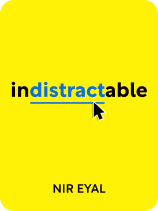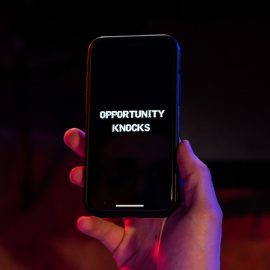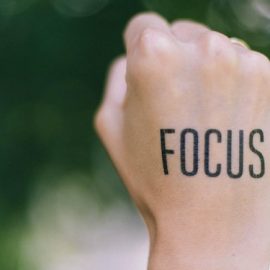

This article is an excerpt from the Shortform book guide to "Indistractable" by Nir Eyal. Shortform has the world's best summaries and analyses of books you should be reading.
Like this article? Sign up for a free trial here .
What are traction and distraction in terms of being indistractable? Is it possible to control your distractions?
In the book Indistractable, Nir Eyal says that actions spurred by triggers are either traction or distraction. Your actions will either push you towards your goals or pull you away from them.
Continue reading to learn about traction and distraction.
What Does It Mean to Be Indistractable?
In our overconnected world, there’s always an app notification begging for your attention, an email pinging in the background, or a news feed to scroll through. Technology can be useful if you have control over how you use it, but that’s often not the case. Many people are ruled by their devices—unable to pull themselves away even when they know they should. This takes a toll on your physical and mental health, your ability to focus, and your relationships.
Understand Traction and Distraction
Every one of your actions is spurred by an internal trigger, such as boredom, or an external trigger, such as an Instagram notification. These actions can reflect traction and distraction.
- Traction: Actions that push you in the direction of what you actually want and help you accomplish goals. For example, sitting down to do your homework after dinner.
- Distraction: Actions that pull you away from what you want and don’t help you with your goals. For example, scrolling through Reddit while you’re supposed to be doing homework.
Distractions have always existed, but today’s world offers unprecedented amounts of information, apps attuned to human behavior, and ever-present technology. It’s almost impossible to escape distraction, and it’s always much more accessible and tempting than traction.
The Indistractable Model
Being indistractable means that you understand your distractions and control them instead of letting them control you. When a trigger pushes you toward distraction, you’ll take a moment to examine your feelings and your behavior and figure out how to change your actions to better align with your values.
When you can recognize and stop your distractions, you’ll more consistently choose behaviors that help you gain traction in life—helping you follow through on what you say you’ll do, balance different areas of your life, and become more focused.
The indistractable model has four parts:
- Control your internal triggers.
- Build your schedule around your values.
- Cut out your external triggers.
- Create precommitments.

———End of Preview———
Like what you just read? Read the rest of the world's best book summary and analysis of Nir Eyal's "Indistractable" at Shortform .
Here's what you'll find in our full Indistractable summary :
- How to become indistractable in a world full of distractions
- Why your schedule should be based on your values instead of tasks
- How to start driving your life instead of letting its distractions drive you






